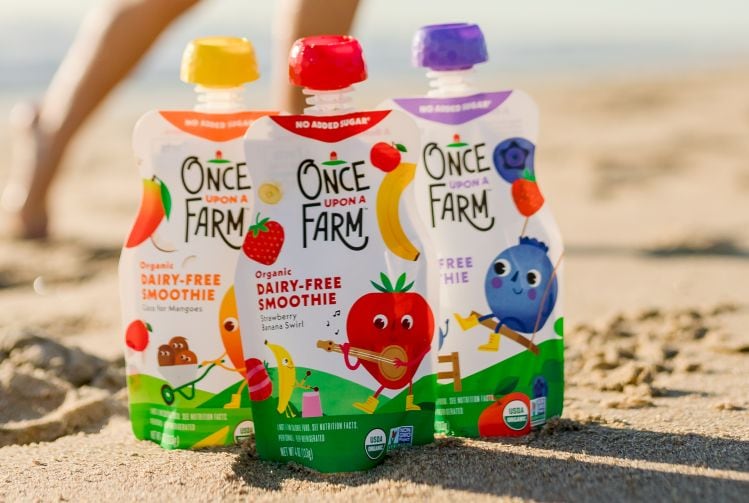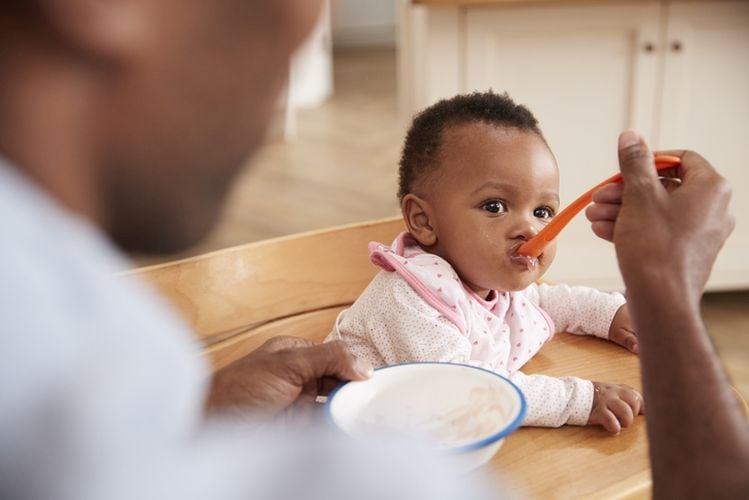Speaking to FoodNavigator-USA after unveiling a packaging refresh to reflect the fact that Once Upon a Farm appeals to toddlers and young kids as well as babies, Foraker said the brand – sold in around 10,000 doors and growing fast online - is now firing on all cylinders.
“But it took us about two years to really figure things out,” he said. “When we rolled out nationally in 2018, we took a pretty aggressive posture; we thought with Jen’s [co-founder and chief brand officer Jennifer Garner] association with the brand in particular, we had a unique opportunity to really break through, and we did. In most retailers, we maintained enough velocity to hold onto that initial distribution."
However, “in about 10% of it, it was not working that well,” he said. In one case, the team experienced some “unvarnished criticism,” he recalls. “It was a retailer that said, Hey, you guys told us this was going to go great, so we put in 12 items... and they’re not turning as fast as they need to.
“They cut our stores and our assortment in half. But since then, we’ve quadrupled or quintupled velocities and we’re back in all the stores again and doing great business… but that’s the entrepreneurial journey.”
Unvarnished criticism…
So what’s the sweet spot with assortment when you’re not just a new brand, but you’re also trying to build a new category?
“If we had gone in with three items, we wouldn’t have taken off,” said Foraker. “But in that early retailer, we were splitting turns. So for us, the happy medium is around eight or nine SKUs.
“We learned from that, and we pulled back in some cases, but where it was working, we doubled or tripled down, and since then, our distribution has increased, our velocities are triple or quadruple what they were at launch, and they are just accelerating like crazy right now.”
SKU rationalization: ‘Many retailers are cutting 25-30% of their items’
And right now, driving velocity rather than aggressively increasing the footprint is something many brands are focused on given the SKU rationalization prompted by COVID-19, he added.
“Across retail, many retailers are cutting 25-30% of their items and double and triple facing the highest velocity stuff. It’s like a pendulum, so it’s swinging to cutting assortments right now, so we’re doubling down on velocity now, but when the pendulum swings the other way, and it will, we’ll be well placed to expand our footprint.”

The brainchild of San Diego-based entrepreneurs Cassandra Curtis and Ari Raz – both of whom had set up baby food businesses of their own before joining forces in early 2015 –Once Upon a Farm is an organic baby, toddler, and kids’ food brand in HPP-treated pouches sold next to kids’ yogurts in the dairy case, in emerging fresh snacking sets, in standalone fridges in the baby food aisle, and online.
High pressure processing (HPP) – whereby foods or beverages are put into a high-pressure chamber that is flooded with cold water and pressurized (thus the ‘cold-pressured’ moniker) in order to kill pathogens without heat - enables Once Upon a Farm to produce baby food that tastes exactly like the stuff you’d make at home, with no preservatives, colors or flavors and a shelf-life long enough to secure national distribution. Picture credit: Once Upon a Farm
New look: ‘We really weren’t a baby brand; we were a kid brand’
The new look – which features kid-friendly characters – retains the whimsy of the original branding, but is designed to appeal to kids as well as their parents, said Foraker.
“When we joined, we really thought this was a baby food brand, but the learning we’ve had over the last 18, 24 months, was that the consumers eating most of our products were kids aged one to eight; we really weren’t a baby brand; we were a kid brand. And kids do have a really important say, even though parents are the gatekeepers.
“So we’ve started talking more about ourselves that way, and the business really started to accelerate. We tested the new look with existing and prospective consumers and it killed our current look, so we feel pretty good about it.”
But Once Upon a Farm is not moving away from baby food, he said: “In fact, 75% of consumers that find us come into the brand when they have babies that are 6-18 months, but then they stick with us. So you’ll still see significant innovation and investment from us in products specifically targeting babies’ first foods.”
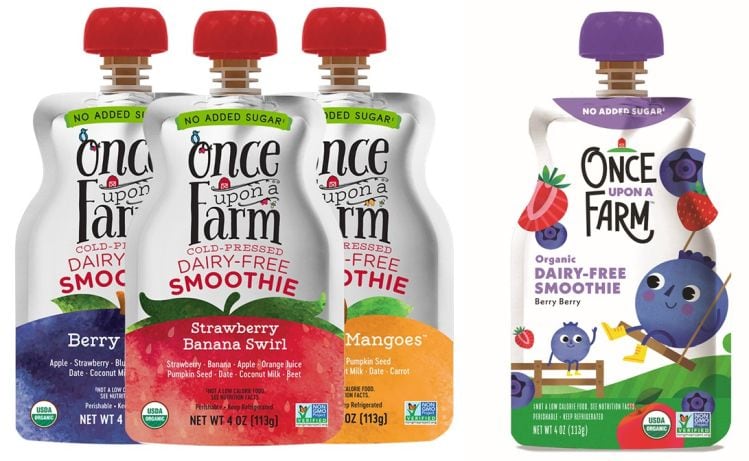
Future of category
The ongoing challenge for fresh baby food is store placement and merchandising, he said.
“In traditional retail, in the shelf-stable baby aisle [where parents looking for baby food naturally still go, despite the emergence of refrigerated baby food sets in other parts of the store] refrigerated is still a work in progress.
“So we’re working on coolers and placing them in the right retailers, and selling online. Fresh baby food as a whole has really grown significantly, but most of the growth is happening in direct to consumer.”
But that doesn’t mean that there’s not a significant opportunity in bricks & mortar retail, he said, although introducing branded coolers into a shelf-stable aisle can be pricey, with vendors bearing the bulk of the cost. However, where retailers are looking to build out a set featuring multiple brands in this space, they will stump up the capital costs themselves, he said.
‘We’re a highly incremental purchase in the kids’ yogurt category’
For products directed towards toddlers and children meanwhile, Foraker is targeting retailers’ emerging fresh snacking sets, or space next to kids’ yogurts in the dairy aisle, which is a high-traffic area of the store, he said. “We’re a highly incremental purchase in the kids’ yogurt category as we’re a non-dairy, no sugar added, super clean cold pressed refrigerated snack.
“Each retailer is doing its own thing, so fresh snacking sets where you might get a shelf of Perfect Bars and a shelf of Once Upon a Farm products are drawing a lot of consumers in and driving incremental business.”
‘Much of the growth in baby food is coming from direct to consumer’
As for innovation in baby food generally, there have been some interesting recent entrants in the shelf-stable space such as Serenity Kids and Cerebelly, he said. While some brands are exploring the frozen aisle, it’s not a place Once Upon a Farm has any immediate plans to explore, however.
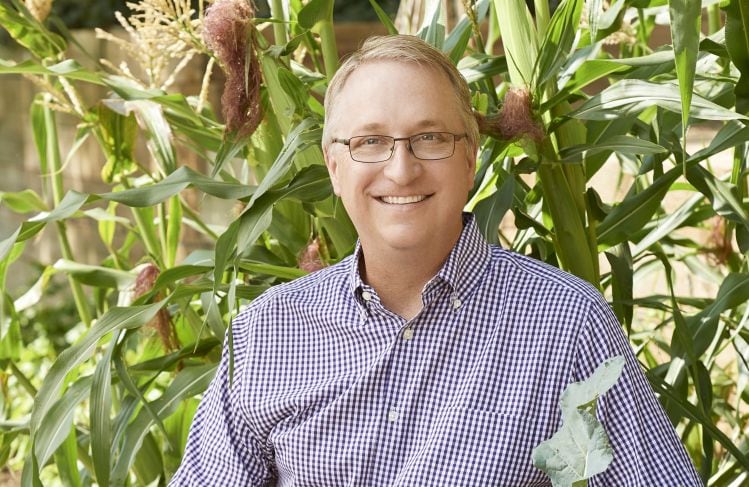
Shipping chilled products to consumers’ homes is not cheap, he conceded, but baby food is a market that lends itself particularly well to a subscription model (once parents find something they like, they’ll stick with it).
“Much of the growth in baby food is coming from direct to consumer, which is a channel we’re been investing in heavily to get the underlying infrastructure to support that business. We’re also building out communications and outreach to simplify the consumer journey and improve conversion, but also to build more intimate relationships with parents.”
Heavy metals… tsunami of lawsuits ‘not helpful’
So what does he make of the recent Congressional Subcommittee report in heavy metals in baby foods?
“You can take steps to reduce the risk by sourcing from certain areas, and by avoiding rice-based products, and then engage in ongoing testing,” said Foraker. “But there’s no such thing as no risk of heavy metals because they are endemic in the environment.”
He added: “We were one of the first brands to engage with The Clean Label Project, and I think having independent certification [Once Upon a Farm has earned a CLP 'purity award' for its best-in-class approach to avoiding contaminants including heavy metals] is important for consumers, but we’re the last brand to throw rocks at competitors in this space as it’s not in our brand DNA, and it’s a complex issue that’s hard to navigate.”
He’s glad that the report has prompted the FDA to commit to setting federal standards, “so everyone knows what the rules are,” but says the tsunami of lawsuits (43 and counting) directed at brands specifically mentioned in the report is “not helpful” given that this is an industry-wide challenge.
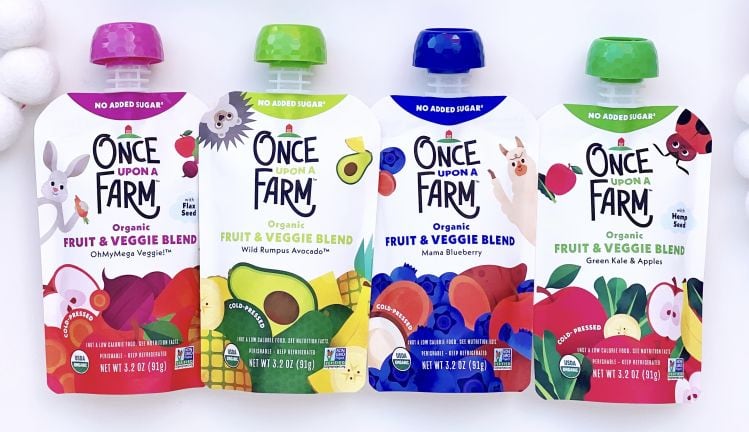
“Parents love pouches, but the end-of-life issue is a challenge,” says CEO John Foraker. They’re not recyclable, and while some parents dutifully save them and mail them off to TerraCycle for upcycling, a good portion of them end up in landfill, he concedes.
“We’re working on substrates that will be recyclable or compostable in the future, so that’s coming, across the industry. Other packaging formats are also interesting to us.”

